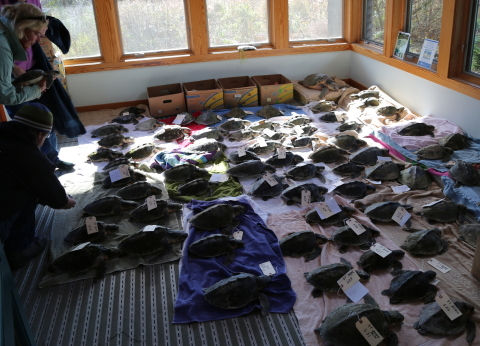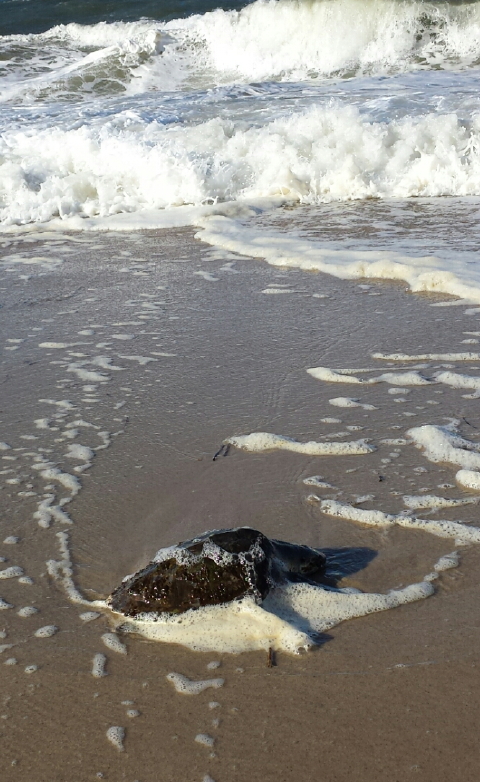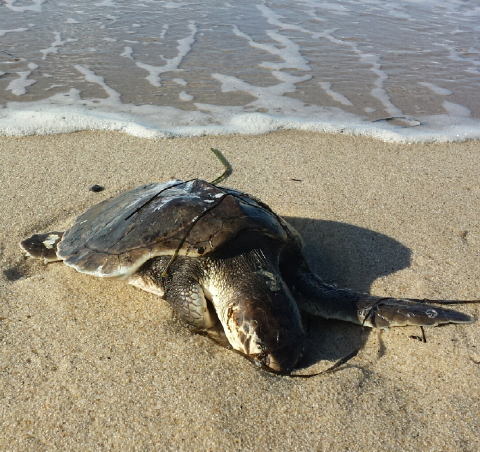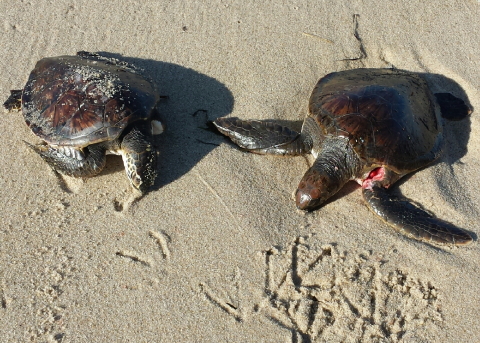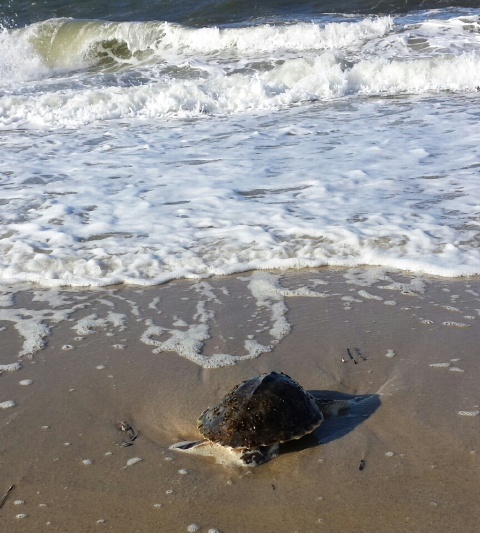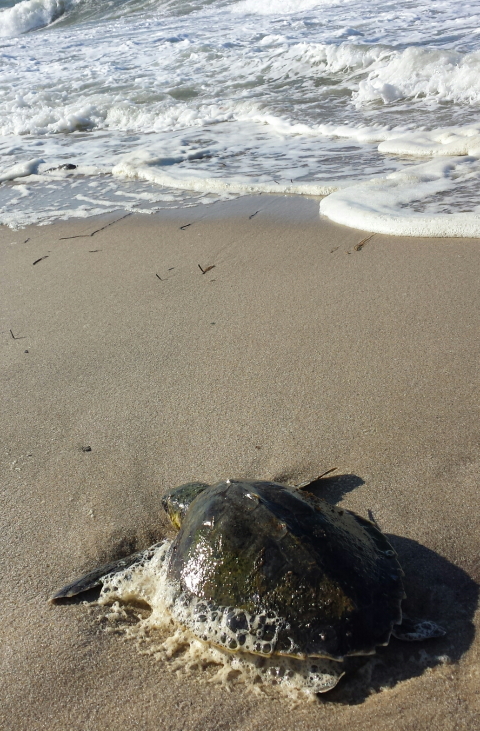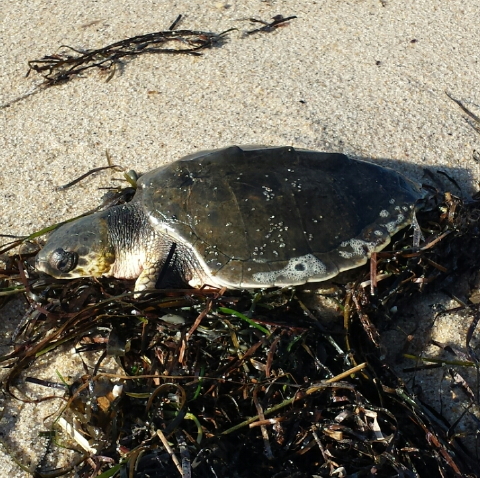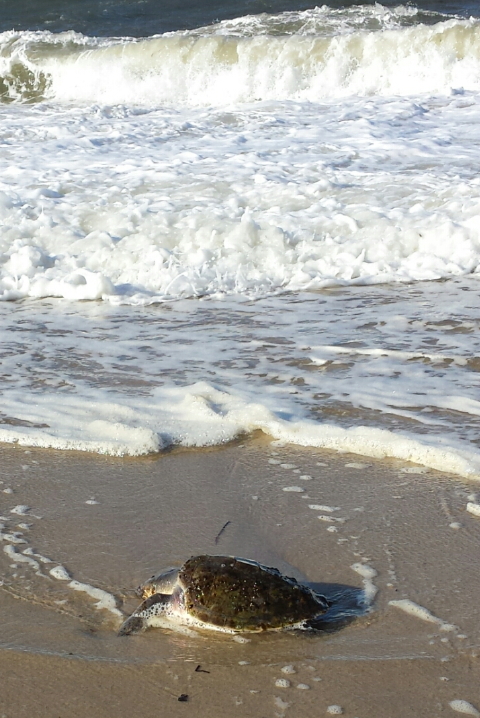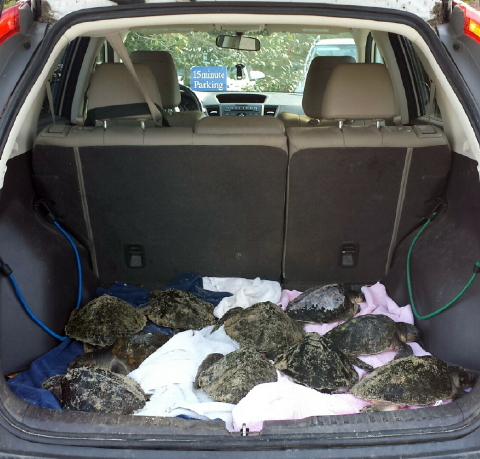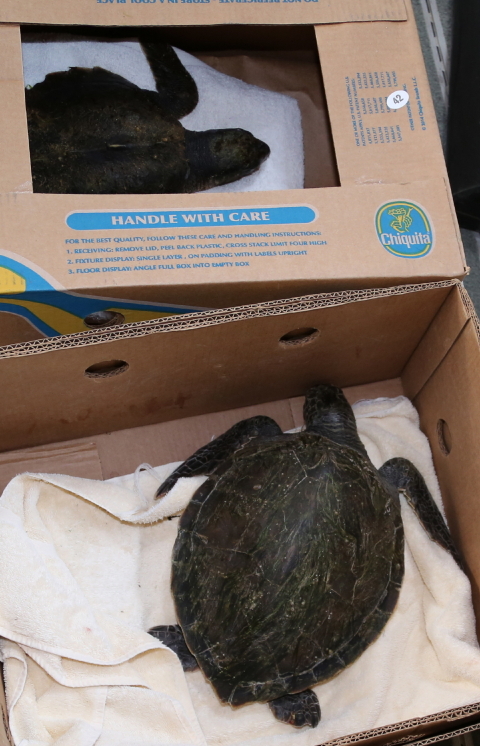Great Blue Heron (Ardea herodias) Returns to SouthCoast Rookery
With paths still covered by 8 inches of icy snow, the Turtle Journal team (Don, Sue and Rufus) trudged through the woods to the local SouthCoast rookery this morning. Â We have been checking the site periodically, as weather permitted, since mid-March with no activity to report.
Still Icy Pond in Front of Natural Rookery Nests
Brutal winter conditions had postponed the arrival of our rookery guests, just as they have postponed all other spring emergence on the South Coast.
Nearly All Natural Nests Destroyed by Winter Storms
Pictured about is one of the primary natural rookery nests that has been employed by ospreys and great blue herons over the last decade. This winter, though, the nest was completely destroyed by hurricane force blizzards in January and February. Â There will be a lot of recovery work to do this spring.
Great Blue Heron  Sitting Surviving SouthCoast Nest
This morning, though, March 31st, we spotted a beautiful great blue heron occupying the sole surviving waterfront nest at the SouthCoast rookery. Â Welcome home! Â And let the season begin.


























